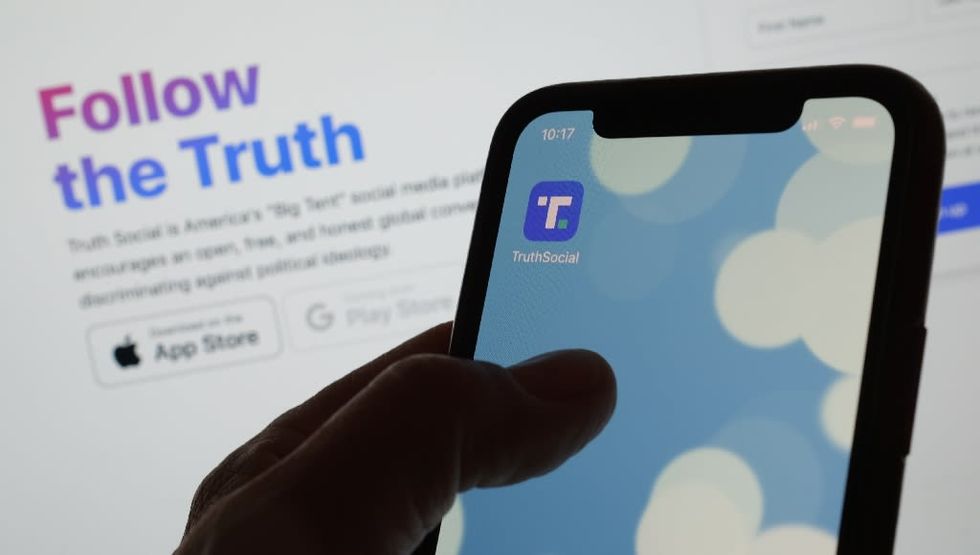White House Slams Republicans Who Criticized Student Debt Relief But Received PPP Loans
TOPLINE
The White House caused a stir on Twitter Thursday afternoon by calling out several Republican lawmakers who criticized President Joe Biden's move to forgive up to $20,000 in student loan debt for many borrowers, pointing out that some of the critics’ businesses had more than $1 million in federal loans forgiven as part of the pandemic-era Paycheck Protection Program.
KEY FACTS
The White House account quote-tweeted criticisms of Biden's plan voiced by Republican Reps. Marjorie Taylor Greene (Ga.), Vern Buchanan (Fla.), Markwayne Mullin (Okla.), Kevin Hern (Okla.) and Mike Kelly (Penn.), while also quoting a tweet from Rep. Matt Gaetz (R-Fla.) critical of funding the Ukrainian military.
Each quote tweet simply listed the member of Congress' name and how much in PPP loans they had forgiven: The White House says Buchanan had the most of the cohort with $2.3 million in forgiven loans, followed by Mullin ($1.4 million), Hern ($1 million), Kelly ($987,237), Gaetz ($482,321) and Greene ($183,504)
All six lawmakers received PPP loans by owning or being affiliated with businesses eligible under the program: For example, Hern’s fast food company and Mullin’s plumbing company received PPP loans, as did several of Kelly’s car dealerships and a company owned by Greene’s family.
The six tweets in the White House's thread were the six most popular on the platform published between 4 p.m. and 7 p.m. Eastern time, according to data compiled by social media tracking firm NewsWhip.
CONTRA
Unlike federal student loans, PPP loans were doled out at the start of the Covid-19 pandemic with the intention of being forgiven, provided borrowers met certain qualifications like spending most of the funding on payroll costs and maintaining employee compensation levels.
KEY BACKGROUND
Biden has come under a barrage of criticism from Republican lawmakers for his move Wednesday to cancel $10,000 in federal student loan debt for borrowers making less than $125,000 a year, with $20,000 in debt relief for those under the income threshold who received Pell Grants. Senate Majority Leader Mitch McConnell (R-Ky.) was among the first lawmakers to speak out against the plan, castigating it as "a slap in the face to every family who sacrificed to save for college." The GOP and a handful of Democratic moderates have also slammed the plan over concerns that it will further fuel inflation, but the White House has brushed off those worries. Biden suggested at a news conference Wednesday he would use PPP loan forgiveness to clap back at criticism, saying, “No one complained that those loans caused inflation.”
TANGENT
The Paycheck Protection Program was created under the CARES Act in March 2020, with the primary purpose of keeping workers on small businesses' payrolls during a period of widespread shutdowns in the early days of the Covid-19 pandemic. It has been marred by reports of fraud and abuse, and instances in which larger and more well-heeled employers took out loans. A study published last month by the Federal Reserve Bank of St. Louis determined "benefits flowed disproportionately to wealthier households rather than to the rank-and-file workers," and estimated that taxpayers spent $4 for every $1 that went toward workers' wages in PPP loans.
White House calls out Greene, other GOP
critics on how their own loans were forgiven
The White House on Thursday called out Rep. Marjorie Taylor Greene’s (R-Ga.) criticism of President Biden’s plan to forgive some student loans, noting that the congresswoman had Paycheck Protection Program loans forgiven.
The Biden administration’s official Twitter account shared a video of Greene knocking the just-announced debt cancellation in a Newsmax interview as “completely unfair.”
“Congresswoman Marjorie Taylor Greene had $183,504 in PPP loans forgiven,” the White House wrote, referring to the Paycheck Protection Program (PPP), a lifeline extended to help small businesses stay afloat during the COVID-19 pandemic.
Data from ProPublica shows the loan and accrued interest for Greene’s company, Taylor Commercial, Inc., which reportedly would go to payroll, was forgiven.
The Hill has reached out to Greene’s office for comment.
The Biden administration is forgiving up to $10,000 in federal student loan debt for Americans earning less than $125,000 per year, and up to $20,000 for Pell Grant recipients earning less than $125,000 per year.
Biden also announced yet another extension of a freeze on federal student loan repayments and interest accrual, just before the Aug. 31 expiration date set when the deadline was last pushed back.
“For our government just to say, you know, ‘Ok, well your debt is completely forgiven,’ … it’s completely unfair,” Greene said in the Newsmax interview, which aired Wednesday.
Taxpayers “shouldn’t have to pay off the great big student loan debt for some college student that piled up massive debt going to some Ivy league school,” Greene argued. “That’s not fair.”
Biden responded on Wednesday to reporters’ questions about whether the debt forgiveness is unfair to those who have already paid off or chose not to take out loans, taking a swing at tax cuts on the rich.NotedDC — Biden hitting the road?Mike Lee agrees to Senate debate against Evan McMullin
“Is it fair to people who, in fact, do not own multibillion-dollar businesses, if they see one of these guys getting all the tax cuts? Is that fair? What do you think?” Biden said after his remarks announcing the plan.
The debt relief move has garnered praise from Democrats, while Republicans have criticized the economics.
The White House Twitter account has created a thread below its response to Greene’s criticism, with similar responses to other Congressional critics of the student loan debt announcement. The congressmen whose PPP loan amounts were revealed include Reps. Vern Buchanan (R-Fla.), Markwayne Mullin (R-Okla.), Kevin Hern (R-Okla.), Mike Kelly (R-Pa.) and Matt Gaetz (R-Fla.).










 Former U.S. Attorney General Bill Barr meets with members of the St. Louis Police Department during a roundtable discussion on October 15, 2020, in St Louis, Missouri. "The tactic that Trump is using to exert this control over the Republican Party is extortion," Barr said.JEFF ROBERSON/GETTY IMAGES
Former U.S. Attorney General Bill Barr meets with members of the St. Louis Police Department during a roundtable discussion on October 15, 2020, in St Louis, Missouri. "The tactic that Trump is using to exert this control over the Republican Party is extortion," Barr said.JEFF ROBERSON/GETTY IMAGES

